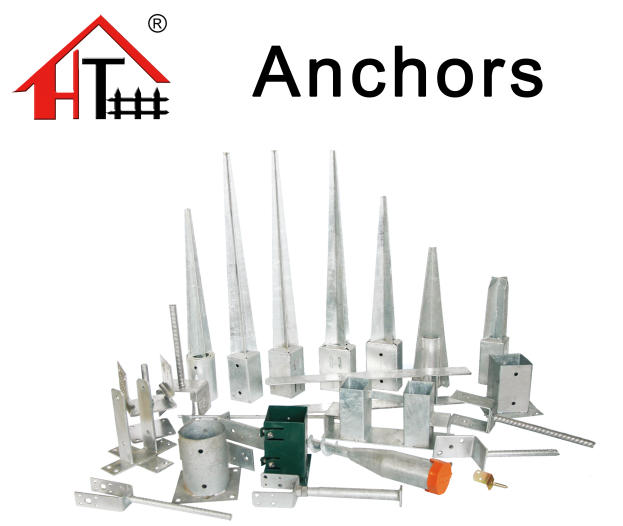How to Install a Chain Link Fence in 10 Easy Steps
Chain link fencing is a budget-friendly barrier that safely contains your children and pets without blocking your view. It’s also quick and easy to install, which means you—and a helper or two—could build your new fence in as little as a day. This guide will show you step-by-step instructions on how to install a chain link fence. Let’s get building.
Prepping to Install a Chain Link Fence
Installing a chain link fence is relatively straightforward, but it does require some planning. Before you get started, check the following items off your to-do list to ensure a safe, smooth installation:
1. Check local codes and HOA guidelines. Your city may have established specific building codes that restrict fence height, placement, or materials. Check with your local building department before you begin working to avoid any frustrating delays.
Similarly, your homeowner’s association may have guidelines that prevent or restrict your ability to build on your property. It may also have rules regarding the types of fences you can build in the community. Review the guidelines or consult a member of the organization first to get the green light.
2. Select the right height and materials. Next, decide how tall you want your fence to be and what type of materials you’d like to use. Chain link fence fabric is usually sold in rolls ranging from four to six feet high. You can also choose between heavy-duty galvanized steel and lightweight aluminum mesh depending on your needs.
Both steel and aluminum chain link fences require a handful of parts, too. Alongside the mesh and posts, you’ll need items like tension bars, tension bands, rail end caps, tie wires, and nuts and bolts to install a sturdy, long-lasting fence. For a detailed look at the parts you’ll need, refer to the infographic above.
3. Find your property line. After getting the necessary approvals and choosing the best fence for your yard, take some time to locate your property line. If necessary, contact your local assessor’s department to determine exactly where it’s located.
Your assessor may have specific guidelines addressing fence placement. As a general rule, plan to position your fence line two to eight inches away from the property line.
4. Call 811. Call 811 or visit your state’s 811 center website to request information about any buried utilities on your property. You can also ask your 811 center to mark the lines with flags or paint so you don’t accidentally dig into an underground utility line.
Finally, get familiar with the parts of a chain link fence. Doing so helps you organize your materials and complete each step more easily.

-
Plan Your Fence Layout
Take some time to plan your fence layout before digging. It may seem like an extra step but trust us: You don’t want a crooked fence.
-
Using batter boards and string to mark the fence layout. Place your batter boards slightly beyond where your fence corners will sit.
-
Run mason’s string perpendicularly between the boards.
-
Cross the lines at each corner, making sure to tie them off to complete the perimeter.
Once you’ve tied the lines and enclosed the space, make sure your corners are square using the 3-4-5 method.
-
Starting at one corner, measure three feet down one string and four feet down the other. If your corners are square, the diagonal distance should measure five feet.
-
If the distance is off, simply adjust your strings and measure again. Then, repeat the process on all four corners.
Next, use landscape stakes or spray paint to mark the space between your fence posts. Generally, you should space the posts between six and 10 feet apart. Leave an extra 3 ¾ inches between posts if you plan to add a gate to your chain link fence.
Finally, mark the location of your layout strings on your batter boards and remove the string to prepare for digging.
-
Dig the Post Holes
Now, you’re officially ready to start digging. Before you reach for your post-hole digger, take some time to examine your fence posts. Chain link fence posts come in two sizes: 2 3/8-inch corner and end posts and 1 5/8-inch line posts. Separate the different sizes—and keep them in mind when you start digging. You’ll likely want to keep your tape measure handy, too.
-
For corner or end posts, your holes should be between six and eight inches wide.
-
For line posts, dig a hole between four and six inches wide.
-
Measure your posts and divide by three to determine the depth, then add four inches for gravel.
-
Pour gravel into all fence post holes and tamp it down with a wooden post.
-
Pour six inches of concrete into the end, corner, and gate post holes. Don’t add concrete to the line post holes.
-
Install and Set the Posts
It’s tempting to rush this step in an attempt to finish your fence early. Even so, well-set corner, gate, and terminal posts are essential for a sturdy fence system. With that in mind, take your time—and recruit a helper to make the process easier.
-
Pour six inches of concrete into the post holes, then carefully place the posts in the wet concrete.
-
Use a post level to plumb the posts and have a helper hold them steady as you add more concrete.
-
Slowly fill the holes with concrete. Angle the mixture slightly so water will run away from the posts.
-
Once you’ve filled the holes, ensure the posts are still level before allowing the concrete to set completely.
If you’re using quick-setting concrete, you may decide to hold the posts until they set. Otherwise, consider building a temporary brace to keep the posts aligned.
-
Install the Post Hardware
After the concrete cures, install tension bands on each corner, gate, and terminal post. Refer to your manufacturer guidelines for more information, but as a general rule, use three tension bands for a 4-foot post, four bands for a 5-foot post, and five for a 6-foot post.
-
Once you’ve attached the tension bands, add gate post hinges and latches. You don’t have to place them in their final position at this point, but try to get them close.
-
Place a brace band over each gate and end post and two on the corner posts.
-
Use a rubber mallet to secure the end caps onto the installed posts.
-
Install Line Posts, Caps, and Rails
Use your rubber mallet to fix looped line caps to each line post. After attaching the post caps, you can place the line posts in their holes, but don’t fill them yet.
-
Secure a rail cap to the brace bands on your end posts. Tighten them enough to hold the cap in place before sliding the rails through the looped caps.
-
If needed, cut the rails with a hacksaw or pipe cutter and smooth the ends with a file.
-
Feed the rails into the rail caps and tighten the brace bands to maintain the rail height, leaving two inches of space between the bottom rail and the ground.
-
Fill the line post holes with dirt and tamp them down carefully. If you’ve got a helper around, have them hold the posts while you fill the holes.
-
Hang Fence Fabric and Install Tension Bars
Gather your fence material and unroll it on the ground near the fence line. Then, slide a tension bar through the chain link mesh at the end of the roll. The tension bar will stabilize the mesh and make attaching the material to the fence posts easier.
-
After weaving the tension bars through the fence material, stand the chain link mesh upright.
-
Slip the tension bar into the brace bands on a terminal post, then push a bolt through the holes in the bands.
-
Tighten the bolt with a socket wrench to lock the bar in place.
-
Finally, adjust the chain link mesh so that it sits about one inch above the top rail and two inches above the ground.
-
Begin to Stretch and Tighten the Chain Link Mesh
Insert a tension bar about 3 feet from the opposite end of the chain link mesh, then attach a fence fabric stretcher bar to the tension rod.
-
Hook your come-along puller winch to the stretcher bar and crank the lever until the chain link mesh moves less than ¼ inch when you squeeze the diamonds.
-
With the puller in place, slide a tension bar through the end of the mesh and attach it to the terminal post. Secure it in place by tightening the bolts with a wrench.
Sometimes, as you tighten your fence, the mesh will become distorted and misshapen. If needed, use your hands to pull on the mesh and reshape it after using the puller winch. This may be easier if you enlist a friend to help.
-
Remove Excess Mesh
After tightening your fence, there might be extra mesh at the end of your posts. You’ll need to remove it to have a clean fence line.
-
Examine the mesh at the end posts. If there’s excess fabric, simply open the steel or aluminum diamonds at the top and bottom.
-
Twist carefully and remove the extra strands until the mesh aligns with the post.
After that, you can release the puller, remove the extra tension bar and stretcher bar, and continue the hanging process until you've enclosed the perimeter.
-
Tie Your Mesh to the Rails
Once your mesh is in place, you’ll need to secure it. Use aluminum tie wires to tie the chain link mesh to the rails. Space the fence ties about 24 inches apart on the top rail and 12 inches apart on the line posts.
-
Weave tension wire through the bottom of the chain link mesh to add rigidity.
-
Attach the tension wire to the end posts, wrapping the wire around several times to secure it.
-
Install the Gate
Congratulations, you’re almost done installing your fence. Finish the job by hanging your gate.
-
Place a block on the ground to hold the gate off the ground.
-
Adjust the hinges to fit the gate and tighten the hinge bolts to secure it in place.
-
Attach the latch to the opposite side of the gate.
-
Use a socket wrench to tighten the latch, leaving it loose enough to open and close easily.
DIY Chain Link Fence Installation vs. Hiring a Pro
Typically, when you hire a pro, a chain link fence costs $1,275 to $3,450. If you know how to build a chain link fence on your own, you can tackle the job and save anywhere from a few hundred to a couple of thousand dollars. That’s no small chunk of change, but this DIY can get complicated when covering a large area or installing a fence on uneven ground. Beyond that, not everyone has a weekend to dedicate to a DIY.
For these reasons, consider hiring a chain link fence installer near you. If you go the DIY route, you should at least enlist a friend to help, especially when pouring concrete and tightening the mesh.

















